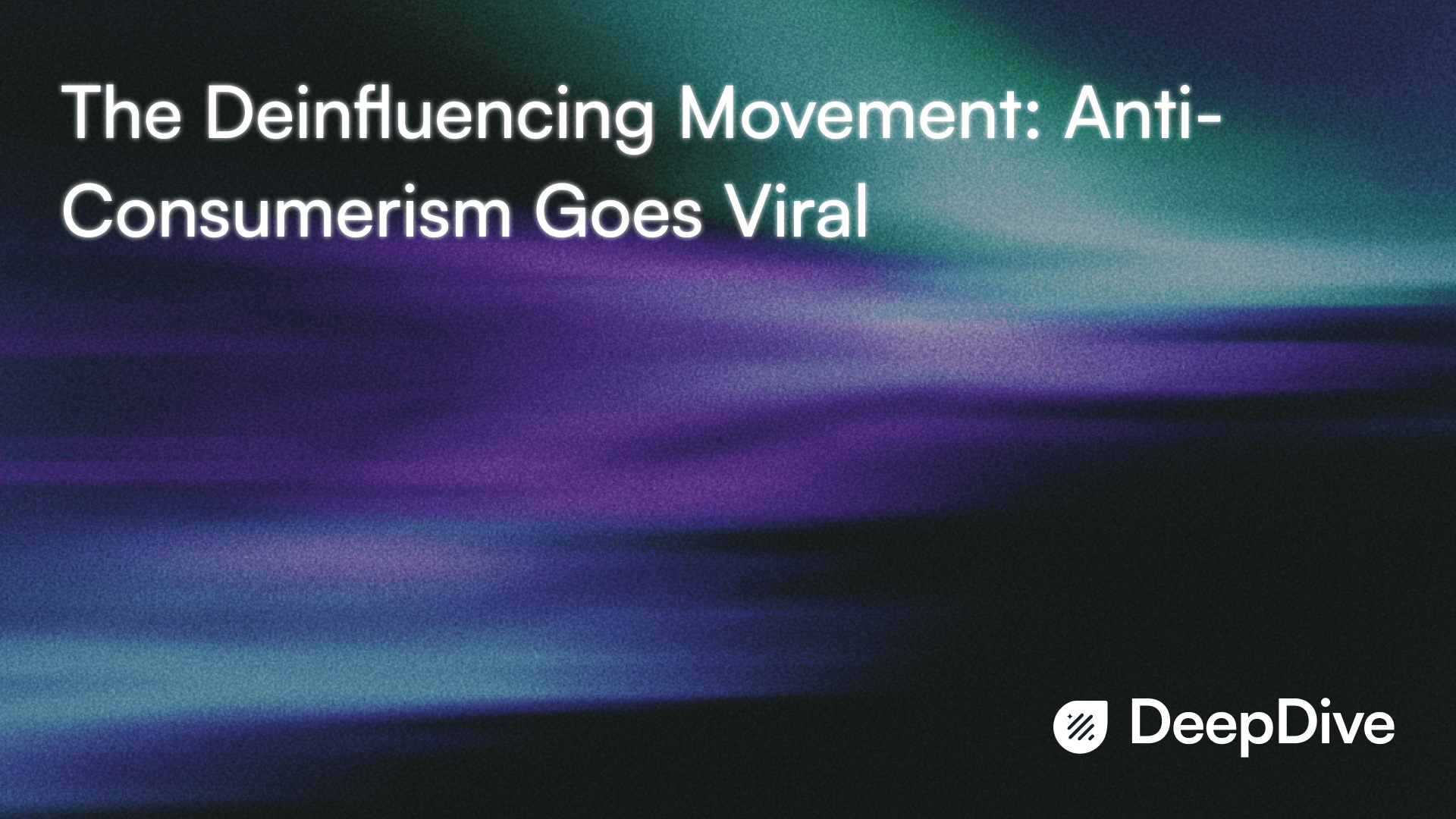We are excited to announce our $2M seed round led by Joa Capital.
Read Now

November 9, 2025
Fabiana Binte Mesbah
A few years ago, influencer culture ruled the digital landscape. A single swipe, and your feed would be filled with creators endorsing serums, sneakers, and supplements that “changed their lives.” Fast-forward to 2025, and the same creators are now saying the opposite, “don’t buy it.”
Enter the deinfluencing movement, a viral pushback against overconsumption that has taken over TikTok, Instagram, and YouTube. What started as a niche countertrend has exploded into a full-blown cultural reset, where creators build engagement not through affiliate codes, but by urging followers to save their money, think critically, and consume less.

Caption: The deinfluencing trend: not just “don’t buy” but “buy better”
The deinfluencing movement spans multiple formats and tones, from playful to deeply critical. A scroll through your For You Page might reveal a few of the following:
In essence, deinfluencing doesn’t reject influence — it redirects it. Instead of urging purchase, it promotes discernment.
Behind the viral traction of deinfluencing lies a potent mix of social and economic realities.
Deinfluencing has become a collective sigh, a way for audiences to reclaim agency in a feed saturated with persuasive marketing.
Psst, it might be interesting to look at the top influencer marketing fails of all time!
Here’s the irony: deinfluencers are still influencers. Many built their livelihoods on brand partnerships, affiliate marketing, and product sponsorships. Now, they’re walking a tightrope between authenticity and income.
Creators who deinfluence risk alienating the very brands that sustain them. Yet, refusing to join the movement can make them seem out of touch with audience sentiment. The result is a delicate balancing act: some creators pair “anti-haul” videos with “ethical brand” sponsorships; others highlight minimalist products they do recommend, framing it as “intentional influence.”
But not all followers buy it. Comment sections are filled with debates on whether one can deinfluence and monetize without contradiction. It’s a new form of creator accountability — one driven not by algorithmic trends, but by audience ethics.
Social listening across platforms shows a dramatic rise in conversations around anti-consumerism, ethical shopping, and sustainable choices. Sentiment data from TikTok comment threads and Reddit discussions indicates a surge in positive engagement with transparency and critical takes on capitalism, especially among Gen Z.
Here’s where tools like DeepDive’s influencer campaign monitoring become invaluable for marketers. Tracking deinfluencing conversations allows brands to identify shifts in consumer trust, sentiment toward specific product categories, and emerging creator credibility. In a climate where authenticity trumps aesthetic, understanding why audiences reject products can be as insightful as knowing what they buy.

The deinfluencing movement isn’t an anti-brand revolution; it’s a wake-up call. It reveals an audience that’s not anti-shopping, but pro-consciousness. Brands that misread this shift risk appearing tone-deaf. Those that adapt can build deeper, more resilient trust.
Here’s what marketers can learn:
Not quite, it’s an evolution. Just as the rise of micro-influencers redefined reach, deinfluencing redefines relevance. It pushes creators and brands toward a new social contract rooted in transparency and shared values.
Deinfluencing doesn’t kill desire; it clarifies it. The movement isn’t saying “don’t buy”. It’s saying “buy better.”
As social media matures, audiences are demanding more meaningful influence. Deinfluencing is less about rebellion and more about recalibration, a reminder that influence doesn’t always need to sell something to be powerful.
For brands willing to listen, the message is clear: authenticity isn’t a buzzword anymore. It’s the new baseline for trust in the digital economy.
Discover How Audience Intelligence can help your brand grow